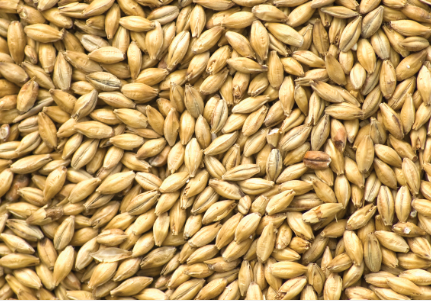Industry News
Thai feed mills negotiate wheat import policy
Updated:2017-05-06 10:19:24 Author:World Grain.com Views:

WASHINGTON, D.C., U.S. — The Thai Feed Mill Association (TFMA) is negotiating with its government over the new import regulations on feed wheat that were implemented in January 2017. The new regulations require feed mills to purchase domestic corn prior to importing feed wheat, at a 3:1 domestic absorption rate of imported feed wheat/domestic corn, according to a report from the Foreign Agricultural Service (FAS) of the U.S. Department of Agriculture (USDA).
“The TFMA wants the government to reconsider the corn absorption rates for feeds which do not typically use corn, such as fish feed, shrimp feed, and pet food,” the USDA said. “However, the government is reportedly considering an exemption only for the shrimp feed industry and may allow them to import approximately 110,000 tonnes of feed wheat without being required to use domestic corn. This figure is based on the amount of feed wheat that has historically been imported for shrimp feed production, and accounts for 10% to 20% of the total shrimp feed ration. The government is also considering a 2:1 domestic corn absorption rate for a pet food producer that requires approximately 20,000 tonnes of feed wheat annually. The Ministry of Commerce in consultation with the Ministry of Agriculture and Cooperatives’ Department of Livestock Development and Department of Fishery is seeking cabinet approval, which may be granted in the next couple of months.”
The new feed wheat import regulations have caused a significant reduction in Thai feed wheat imports. During January – February 2017, imports of feed wheat totaled 226,170 tonnes, down 60% from the same period last year, with the quantity imported from the Ukraine declining 86%. For the first eight months of market year 2016-17, all wheat imports totaled 2.9 million tonnes, the USDA said. This is a 7% reduction from the same period in market year 2015-16 due mainly to the reduction in imported feed wheat, which declined to approximately 2.1 million tonnes, down 8% from the same period in market year 2015-16. Also, imports of milling wheat declined approximately 4% due to lower imports of Canadian wheat due to concerns about crop quality. Meanwhile, U.S. wheat imports increased to approximately 0.4 million tonnes, up 4% from the same period of market year 2015-16.
The report forecast declining wheat imports of 3.6 million tonnes in market year 2016-17 and 3 million tonnes in market year 2017-18 due to the reduction in feed wheat imports. In addition to the new import regulations, the sale of government feed-quality rice stocks of around 1.6 million tonnes in April 2017 will reduce import demand for feed wheat in swine feed rations as the price of feed quality rice stocks is 30% to 35% lower than the price for imported feed wheat, the USDA said.
“The TFMA wants the government to reconsider the corn absorption rates for feeds which do not typically use corn, such as fish feed, shrimp feed, and pet food,” the USDA said. “However, the government is reportedly considering an exemption only for the shrimp feed industry and may allow them to import approximately 110,000 tonnes of feed wheat without being required to use domestic corn. This figure is based on the amount of feed wheat that has historically been imported for shrimp feed production, and accounts for 10% to 20% of the total shrimp feed ration. The government is also considering a 2:1 domestic corn absorption rate for a pet food producer that requires approximately 20,000 tonnes of feed wheat annually. The Ministry of Commerce in consultation with the Ministry of Agriculture and Cooperatives’ Department of Livestock Development and Department of Fishery is seeking cabinet approval, which may be granted in the next couple of months.”
The new feed wheat import regulations have caused a significant reduction in Thai feed wheat imports. During January – February 2017, imports of feed wheat totaled 226,170 tonnes, down 60% from the same period last year, with the quantity imported from the Ukraine declining 86%. For the first eight months of market year 2016-17, all wheat imports totaled 2.9 million tonnes, the USDA said. This is a 7% reduction from the same period in market year 2015-16 due mainly to the reduction in imported feed wheat, which declined to approximately 2.1 million tonnes, down 8% from the same period in market year 2015-16. Also, imports of milling wheat declined approximately 4% due to lower imports of Canadian wheat due to concerns about crop quality. Meanwhile, U.S. wheat imports increased to approximately 0.4 million tonnes, up 4% from the same period of market year 2015-16.
The report forecast declining wheat imports of 3.6 million tonnes in market year 2016-17 and 3 million tonnes in market year 2017-18 due to the reduction in feed wheat imports. In addition to the new import regulations, the sale of government feed-quality rice stocks of around 1.6 million tonnes in April 2017 will reduce import demand for feed wheat in swine feed rations as the price of feed quality rice stocks is 30% to 35% lower than the price for imported feed wheat, the USDA said.
Previous:NAMA elects new vice-chairman
Related Articles
- (2017-10-18)Maize Flour/Corn grits Consumption in Africa Market
- (2018-04-11) How to choose the right flour packing machine
- (2017-12-07)How to Judge the Quality of corn/maize flour milling machine
- (2017-10-20)How to make full use of corn in corn/maize processing equipment industry
- (2017-09-08)What are the characteristics and advantages of flour milling machine?
- (2017-09-13)Taixing corn processing equipment to participate
- (2017-11-03)Wheat Flour Mill Machine, Wheat Flour Production Line for Sale
- (2016-04-28)Introduction to complete sets of corn processin
- (2018-03-06) How to Buy The Cheapest Milling Maize Machine
- (2017-05-20)The Belt and Road Initiatives

